Coffee Farm Lists
-
Characteristics of Honduran Coffee beans introduction of fine coffee

Overall, Honduran coffee has a good reputation and is suitable for mixed coffee. Coffee in Honduras is imported from El Salvador. Honduras produces high-acid high-quality coffee. Like other places, the coffee grade in Honduras depends on altitude: coffee grown at 700 to 1000 meters above sea level is medium, and grown at 1000 to 1500 meters above sea level
2016-05-09 Honduras coffee beans characteristics introduction boutique coffee in general -
The characteristics of Guatemalan coffee beans the introduction of Guatemalan coffee beans

The extra-hard coffee beans here are full-grained, delicious and balanced, and the coffee made with them is pure and rich. Guatemala coffee once enjoyed a reputation as the best quality coffee in the world, but its quality also declined for a time. What is gratifying, however, is that its reputation is gradually being restored. In 1750, Father Jesuit introduced coffee trees to Guatemala, at the end of the 19th century.
2016-05-09 Guatemala coffee beans characteristics introduction boutique coffee here extra hard coffee beans -
The Origin of Salvadoran Coffee beans
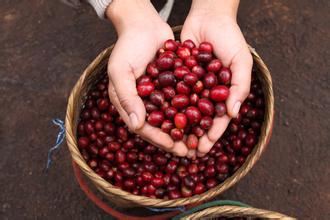
Unique, mild-tasting coffee. ElSalvador is one of the small countries in Central America with a dense population. The flavor of its coffee is characterized by excellent balance. Today, this coffee accounts for 40% of the country's exports. 35% of the extra hard beans of the best coffee are exported to Germany from January to March. In the early 1990s, guerrilla warfare greatly damaged the country's national classics.
2016-05-09 El Salvador coffee beans origin boutique coffee unique taste warm -
The characteristics of Salvadoran coffee beans the introduction of El Salvador coffee beans

Unique, mild-tasting coffee. ElSalvador is one of the small countries in Central America with a dense population. The flavor of its coffee is characterized by excellent balance. Today, this coffee accounts for 40% of the country's exports. 35% of the extra hard beans of the best coffee are exported to Germany from January to March. In the early 1990s, guerrilla warfare greatly damaged the country's national classics.
2016-05-09 El Salvador coffee beans characteristics introduction boutique coffee unique taste warm -
Characteristics of Costa Rican coffee beans the origin of Costa Rican coffee beans

Tarrazu in Costa Rica is one of the major coffee producing areas in the world. The coffee produced is light and pure in flavor and pleasant in aroma. Costa Rica, with its fertile volcanic soil and good drainage, is the first country in Central America to grow coffee and bananas for commercial value. Coffee and bananas are the country's main exports. In 1729, coffee was introduced from Cuba to Goth.
2016-05-09 Costa Rica coffee beans characteristics origin Tara Tarra -
Mount Elgon, the second highest mountain in Kenya, is formed by volcanic eruptions.
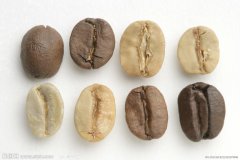
Mount Elgon Manor Mount Elgon, the second highest mountain in Kenya, is formed by volcanic eruptions. Mount Elgon, an extinct volcano, is located on the border with Kenya and northeast of Lake Victoria. Coordinates: 18N ·3433E Mount Elgonne, extinct volcano on the Kenya-Uganda border. The crater is about 8 kilometers (5 miles) in diameter and has several peaks, including Mount Wagagai (Wagag)
2016-05-09 Earl Mount Gongshan Kenya second high mountains is formed by volcanoes eruptions Earl. -
Coffee beans from IYEGO Cooperative Farm, a coffee farm in Kenya
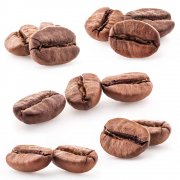
IYEGO cooperative farm unified processing, the production process is supervised by the Kenya Coffee Commission (CoffeeBoardofKenya, referred to as CBK), the management is very strict, to ensure the quality of Kenyan coffee. Kenya bean washing processing technology and high standards of quality control, has always been an example of bean-producing countries. Kangema producing area [manor] IYEGO cooperative [soil] fire in Kenya
2016-05-09 Kenya coffee manor IYEGO partnership farm coffee beans IYEG -
SASINI Manor is located in the KIAMBU area around Mount Kenya, about 1800 meters above sea level.
SASINI Manor is located in KIAMBU area around Mount Mountain Kenya, about 1800 meters above sea level. it has beautiful scenery, pleasant climate, sufficient light and superior soil conditions. it belongs to fertile acid red soil, loose soil, deep soil layer and good drainage. The PH value is between 5.5 and 6.5. Kiambu producing area [manor] SASINI
2016-05-09 SASINI Manor located in Mount Kenya surrounding KIAMBU area -
San Marco has the hottest climate among the eight major coffee producing areas in Guatemala.

Volcano San Marco Volcanic San Marcos: volcano San Marco Volcanic San Marcos: San Marco has the hottest climate of the eight largest coffee producing areas in Guatemala, with a maximum rainfall of 200inches (5000 mm). The rainy season is earlier than in other areas, and coffee trees bloom earlier. Like other remote areas of Guatemala, the volcano San Marco coffee is grown by small farmers.
2016-05-09 Saint Ma however Guatemala Big eight Coffee producing area Climate hottest region Fire -
Coffee beans grown by small farmers in New Oriental, Guatemala

New Oriental (New Oriente): coffee in this area has been grown entirely by small farmers since the 1950s, and now every farmer in the mountains is a coffee production unit. This area, once the most remote and poorest part of Guatemala, is now alive and well. Rainy and cloudy, the ancient era of the New Oriental was a volcanic area, and the soil volcanic metamorphic rocks evolved.
2016-05-09 Guatemala New Oriental small farmers planting coffee beans New Ori -
Among the three major non-volcanic coffee producing areas in Guatemala, the tiny Tenango Highland has the driest climate and the sea.

Highland Huehue: of the three major non-volcanic coffee producing areas in Guatemala, the Ginango Heights has the driest climate and the highest elevation. The dry and hot wind from Mexico's Tehuantepec plateau protects the area's coffee from frost, and coffee can be grown to 2000 meters (6500 feet). Because of its remote location, all coffee
2016-05-09 Guatemala Big three Volcanoes Coffee producing areas Micro Tenan Highlands Climate dry -
Among the three major non-volcanic coffee producing areas in Guatemala, the tiny Tenango Highland has the driest climate and the sea.

Highland Huehue: of the three major non-volcanic coffee producing areas in Guatemala, the Ginango Heights has the driest climate and the highest elevation. The dry and hot wind from Mexico's Tehuantepec plateau protects the area's coffee from frost, and coffee can be grown to 2000 meters (6500 feet). Because of its remote location, all coffee
2016-05-09 Guatemala Big three Volcanoes Coffee producing areas Micro Tenan Highlands Climate dry -
100% full-sun processing of high-quality Guatemalan beans on the Waiqiang plateau

Fraijanes Plateau: Waiqiang Plateau (Fraijanes Plateau) this area is of volcanic soil, high altitude, sufficient rainfall and great humidity variation. Ash from Pacaya, Guatemala's most active volcano, provides important minerals for the soil in the region. There is plenty of sunshine in the dry season, and although it is cloudy and dewy in the morning, it dissipates
2016-05-09 Huaiqiang plateau 100% sun processing Guatemala boutique -
Rainforest Coffee Coffee is grown in the obviously undulating, foggy mountainous areas of Guatemala.

Rainforest Cobn rainforest Rainforest Cobn is cloudy, rainy and cool all the year round. The vast majority of Koban coffee in the rainforest is grown in the obviously undulating and foggy mountains of the region and is deeply influenced by limestone and clay in the Atlantic basin. Koban has two seasons: the rainy season and the rainy season. Rainforest Koban Cup measuring characteristics (Rainforest Cobn)
2016-05-09 Rainforest Coffee planting area obvious undulating foggy Mountain Guatemala Horse -
One of the five major volcanic coffee producing areas in Guatemala.

3. Traditional Traditional Atitl n (Traditional Atitl n) is one of the five largest volcanic coffee producing areas in Guatemala, and its soil organic matter is the most abundant among the five major volcanic coffee producing areas. 90% of the traditional Atilan coffee is grown on the violent volcanic slopes of Lake Attila, where the daily breeze stirs the lake.
2016-05-09 Artie Teran Guatemala Big five Volcanoes Coffee producing areas one tradition A -
Antigua coffee rich volcanic soil, low humidity, plenty of sunshine

two。 Antigua Coffee (Antigua Coffee): Antigua Coffee (Antigua Coffee) rich volcanic soil, low humidity, plenty of sunshine, cool night, is the climate characteristics of Antigua coffee producing areas. The valley is surrounded by three volcanoes: Agua, Fuego and Acatenango. Among them, Tierra del Fuego
2016-05-09 Antioch coffee rich volcanic soil low humidity ample sunshine -
Introduction of Cat shit Coffee beans

Coffee beans generally go through the process of shell fermentation, coffee beans in the civets' intestines, special bacteria provide a unique fermentation environment, the flavor becomes unique, particularly thick and mellow. The coffee beans fermented by civets' intestines and stomach are very thick and mellow. Eva, the owner of the special cafe, is a coffee enthusiast who travels around the world every year in search of rare goods. She told the reporter
2016-05-09 Cat shit coffee beans introduction boutique coffee in general pass -
Walk into the Acatenango Valley Valley in Guatemala.

Acatenango Valley: the Acatenango Valley Valley is 2000 meters (6500 feet) high, with dense shade and unique ecology, and the nearby Fuego volcano continues to erupt, making its coarse, sandy soil rich in minerals. Temperate sea breezes from the Pacific and a seasonal climate make this
2016-05-09 Walk into Guatemala Akka Turan Valley Acatenango Va -
Gold is longer than West Ethiopia, and it is a material that many bakers like to use as comprehensive beans.
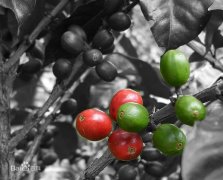
Ghimbi grows in the plateau of Western Ethiopia at 4900-5900 feet (Wollega province) above sea level, north of Jima, mostly wild, with an annual output of about 500000bags/60kg, mostly exported by G5/G4, beans larger and longer than Longberry, brownish in green, similar to less jasmine tea, more bitter, lack of rising Hara, slightly sour, slightly fruity and slightly inferior to wine.
2016-05-09 Kinby Sie Searle Bea Huigan longer many baked like as -
Djimmah accounts for about 50% of Ethiopia's annual output (1000000bags/60kg).
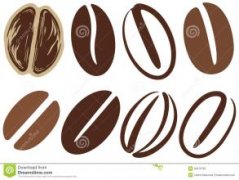
Djimmah, which accounts for about 50 per cent of Ethiopia's annual output (1000000bags/60kg), grows between 4400 and 6000 feet above sea level in the southwestern highlands of the country (the border between Kaffa and Illubabor provinces) and is usually exported by G5/G4. However, in recent years, about 10% or 20% of Gima has been used to make up for the lack of taste of coffee, but its quality has gradually declined.
2016-05-09 Gima Djimmah this annual output 50% of Ethiopia.
